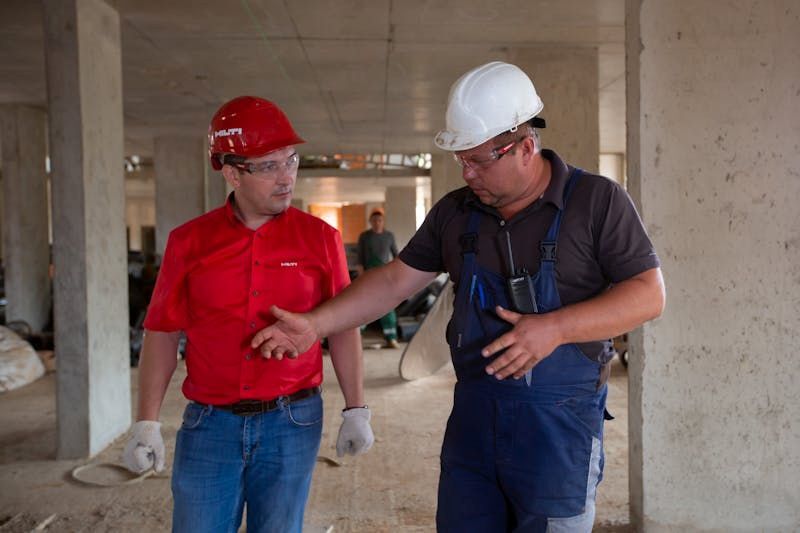.jpg)
Handling daily site operations is increasingly complex as construction projects expand in scope. To manage this efficiently, teams rely on site management software for construction to coordinate tasks, while civil construction site management software improves consistency, accuracy, and efficiency. In 2023, there were 5,20,900 construction site manager roles, reflecting strong demand for professionals skilled in digital tools and modern site systems.
Project success also depends on how materials, equipment, and crew movement are planned and tracked. Construction site logistics management software supports this coordination and reduces delays. This reliance on technology is reflected in the rising construction site manager salary, which has reached $80,379 in 2025, indicating a growing demand for tech-driven expertise.
Why Learning BIM Software Is Essential for Construction Site Managers
Learning BIM is becoming part of standard site practices. Its use is expanding as project demands and digital tools continue to evolve.
1. Adapting to Complex Project Requirements
BIM helps manage drawings, schedules, and updates in one system as projects become more complex. This reduces errors and keeps workflows controlled.
2. Supporting Multi-Team Coordination
By using a shared model, all teams access the same information, avoiding miscommunication. This keeps work sequences aligned between office planning and site execution.
3. Meeting Industry and Compliance Standards
BIM keeps documentation updated and structured, making it easier to meet compliance checks. It also helps maintain traceable records for audits and approvals.
4. Improving Decision-Making with Accurate Information
Managers would be able to see progress and make last-minute decisions on such a real-time model access. This aids quicker resolution of the issues and brings the work of the day on track.
5. Aligning with Evolving Site Technologies
BIM integrates with evolving tools like easy to use site management construction software platforms, enabling site managers to adopt new technologies smoothly and ensure compatibility across digital systems.
Most Used Software for Construction Site Managers
Here is a list of the most used software tools that support construction site managers in daily project coordination and execution:
1. Autodesk Revit

Autodesk Revit models architecture, structure, and MEP systems using parametric components and automatic documentation. Autodesk Revit for site managers connects teams to the latest model versions via cloud access, improving visibility and reducing errors in execution.
Key features:
- Used for: 3D modeling, clash detection, documentation
- Cloud collaboration: Revit cloud work sharing with BIM Collaborate Pro
- Annual cost: ₹1,74,640/year (single-user subscription)
2. BIM 360

BIM 360 is a cloud-based BIM software platform offering centralized document control, field coordination, and real-time issue tracking. It supports safety checklists, RFIs, markups, and version management on-site.
Key features:
- Primary functions: Document control, site coordination, RFI tracking
- Access model: Cloud-based with mobile + web integration
- Licensing structure: Included in Autodesk Construction Cloud plans
3. Autodesk BIM Collaborate Pro

Autodesk BIM Collaborate Pro is a BIM software designed for model coordination and clash resolution in the cloud. It supports 2D/3D model review, issue management, and role-based access. Site managers use it to manage federated models, track coordination progress, and align all stakeholders with the construction-ready information.
Key features:
- Used for: Cloud collaboration, clash detection, and multi-software co-authoring
- Notable impact: 83% reduction in model sync time; €12,000 saved in a single pilot run
- Cost: ₹42,480 per user
4. Navisworks

Navisworks aggregates 3D models and integrates scheduling data to detect clashes and simulate construction sequences. It supports 5D cost and timeline reviews. Managers rely on their model coordination and review tools to identify conflicts before work starts and to align multidisciplinary teams.
Key features:
- Used for: Clash detection, 5D simulation, model aggregation
- Trial availability: 30-day free trial with full feature access
- Access for education: Free version available for students and educators
5. Tekla Structures

Tekla Structures creates detailed structural models for steel and concrete, generating fabrication-level components, rebar drawings, and shop documentation. It bridges design and production by enabling direct model export for manufacturing and on-site installation, improving accuracy in structural delivery.
Key features:
- Tiered plans: Carbon, Graphite, and Diamond offer scalable modeling, detailing, and production features
- Model sharing: Enables centralized collaboration with user and license management via the Tekla Online Admin Tool
- Annual cost: Starts at ₹88,400/year + tax; Diamond at ₹5,65,600/year + tax
6. Autodesk Assemble

Assemble extracts and filter model data for quantity takeoffs, progress tracking, and custom reporting. It connects to BIM 360 for version control. Site managers use it to quantify items, monitor updates, and link model elements with project schedules and budgets.
Key features:
- Model conditioning: Organizes and enriches models with custom data for location, phase, WBS, and activity codes
- Progress tracking: Links model elements to installation status for visual, real-time work-in-place updates
- System integration: Connects with Revit and Power BI for connected workflows
7. Bentley SYNCHRO 4D

Bentley SYNCHRO links 3D models with schedule data to create 4D simulations. It visualizes staging, resource allocation, and site logistics. Managers leverage it to evaluate project phasing and identify bottlenecks before mobilizing work on-site.
Key features:
- Cloud Collaboration: Enables team access via Connected Data Environment.
- Field Accessibility: Supports model access on-site via mobile devices.
- Clash Detection: Identifies design conflicts before construction.
8. Bluebeam Revu

Bluebeam Revu transforms BIM and CAD models into a PDF mark-up ready so that field teams can apply annotations, measurements, and version tracking. It streamlines QA/QC and review processes by providing a clear, on-site update of drawings without altering original files.
Key features:
- Workflow compatibility: Integrates with CAD and BIM platforms for connected processes
- Seamless collaboration: Share updates between desktop, browser, and mobile devices
- Flexible pricing: Starts at $260/user/year with tiered features
9. Procore (BIM Module)

Procore’s BIM module overlays models on project schedules, cost data, and RFI. It links the tasks to the project work and tracks the project's progress. It helps in visualizing model information on-site to allow those working both on and off-site to gain greater levels of transparency in their team.
Key features:
- Primary functions: Document control, site coordination, RFI tracking
- Access model: Cloud-based with mobile + web integration
- Cross-team clarity: Enables on-site and remote teams to access contextual model data
10. Trimble Connect
.jpg?width=800&height=533&name=pexels-thisisengineering-3862373%20(2).jpg)
Trimble Connect is a shared collaboration center of BIM models and project information. It provides mobile version control, cloud storage, and the ability to view models on mobile. This allows the on-site staff to view the latest designs, and thus work is done according to the latest plans.
Key features:
- File format: Support includes more than 45 file types, including GeoSpatial
- 2D and 3D viewing: Open models and drawings in various formats
- Cost: Pro plan at $149/user/year (10 GB); Innovate plan at $349/user/year (20 GB + extra tools)
In Conclusion
Understanding and using the right construction site management software is now essential for handling modern site operations. Building this capability through structured learning ensures site managers stay effective in fast-paced project environments. Taking a trusted course like the Building Information Modeling (BIM) Professional Course for Civil Engineers by Novatr builds this capability. For more tools, comparisons, and expert tips, visit our resource page.
Was this content helpful to you



.jpg)






